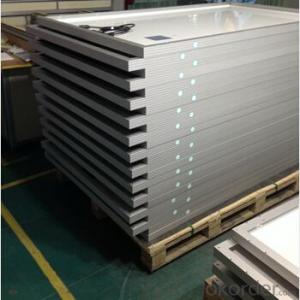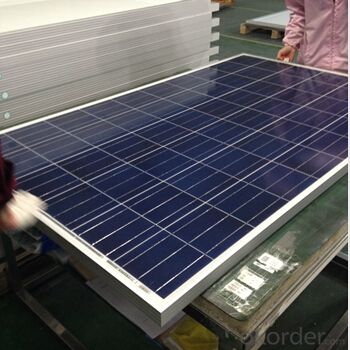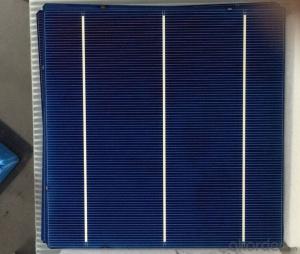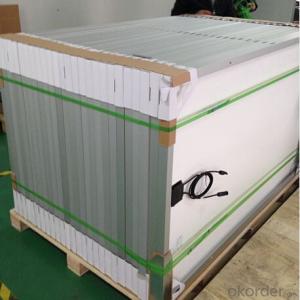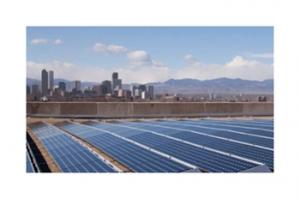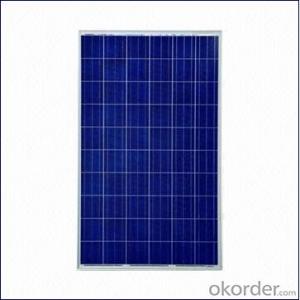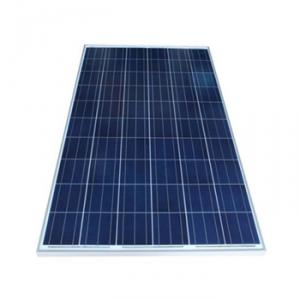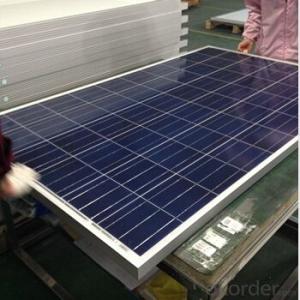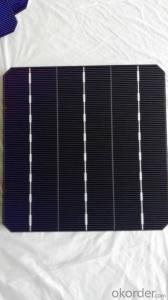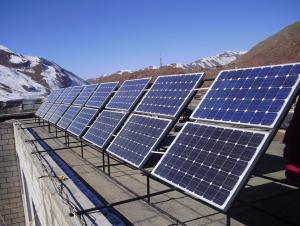Solar Cells Bulk - Polycrystalline Solar Panels for 245w -156*156 Poly Cell
- Loading Port:
- Shanghai
- Payment Terms:
- TT OR LC
- Min Order Qty:
- 25 pc
- Supply Capability:
- 100000 pc/month
OKorder Service Pledge
OKorder Financial Service
You Might Also Like
Specifications:
Structure of Polycrystalline Solar Panel
Polycrystalline Solar Panel for : High efficiency crystalline solar cell.
Even if under the weak light, the solar module can produce maximum power output.
II Tempered glass (toughened glass): Anti-reflecting coating and high transmission rate glass increase the power output and mechanical strength of solar module.
III EVA and TPT: Using high quality EVA and TPT to prevent destroying and water.
IV AI frame: Without screw, rner connection. 6 holes on the frame can be installed easily.
V Junction box: Multi function junction box with water proof.
VI Long lifetime: ≥25 years; Less power decrease.
VII Good performance of preventing from atrocious weather such as wind and hails.
VIII Resisting moisture and etching effectively, not effected by geology.
IX The certificate issued by international authority: UL, TUV, IEC, CE.
Standard Test Conditions of Polycrystalline Silicon Solar Panel:
The opto-electrical specifications shown below are stabilized values being measured at Standard Test Conditions, Irradiance: 1000W/m2, Spectrum: AM1.5 at 25°C, The info below is subject to manufacturing tolerances.
Where appropriate minutes of measurement are available and are used for the dimensioning of the installation.
Advantages of Monocrystalline Silicon Solar Panel
• CNBM Solar performance guarantees for 25 years
• 12 years guarantee for workmanship
• Timeliness of delivery
• Quality Products certified (TÜV, UL, CE, ISO)
Characteristics:
I.Solar Cell : High efficiency crystalline solar cell. Even if under the weak light, the solar module can produce maximum power output.
II.Tempered glass (toughened glass): Anti-reflecting coating and high transmission rate glass increase the power output and mechanical strength of solar module.
III.EVA and TPT: Using high quality EVA and TPT to prevent destroying and water.
IV.AI frame: Without screw, corner connection. 6 holes on the frame can be installed easily.
V.Junction box: Multi function junction box with water proof.
VI.Long lifetime: ≥25 years; Less power decrease.
VII.Good performance of preventing from atrocious weather such as wind and hails.
VIII.Resisting moisture and etching effectively, not effected by geology.
IX.The certificate issued by international authority: UL, TUV, IEC, VDE, CE.
Warranties
1. 10 years limited product warranty
2. 15 years at 90% of the minimal rated power output
3. 25 years at 80% of the minimal rated power output
Technical date :
ITEM NO.: | Poly 156*156 cell ,60pcs . Power range from 230Wp-260Wp | ||||||
Maximum Power(W) | 230 | 235 | 240 | 245 | 250 | 255 | 260 |
Optimum Power Voltage(Vmp) | 29.4 | 29.5 | 29.7 | 30.1 | 30.3 | 30.5 | 30.7 |
Optimum Operatige Current(Imp) | 7.83 | 7.97 | 8.08 | 8.14 | 8.25 | 8.37 | 8.48 |
Open Circuit Voltage(Voc) | 36.7 | 36.8 | 36.9 | 37.1 | 37.3 | 37.5 | 37.7 |
Short Circuit Current(Isc) | 8.52 | 8.59 | 8.62 | 8.65 | 8.69 | 8.73 | 8.78 |
Solar Cell: | 156*156 Poly | ||||||
Number of Cell(pcs) | 6*10 | ||||||
Name of Solar Cells | Polycrystalline Cell | ||||||
Size of Module(mm) | 1650*992*40/45/50 | ||||||
Cable & Connector Type | Pass the TUV Certificate | ||||||
Frame(Material Corners,etc.) | Aluminium-alloy | ||||||
Back sheet | TPT | ||||||
Weight Per Piece(KG) | 19.5KG | ||||||
FF (%) | 70-76% | ||||||
Junction Box Type | Pass the TUV Certificate | ||||||
Tolerance Wattage(e.g.+/-5%) | ±3%, or 0-3% | ||||||
Front Glass Thickness(mm) | 3.2 | ||||||
Temperature Coefficients of Isc(%) | +0.04 | ||||||
Temperature Coefficients of Voc(%) | -0.38 | ||||||
Temperature Coefficients of Pm(%) | -0.47 | ||||||
Temperature Coefficients of Im(%) | +0.04 | ||||||
Temperature Coefficients of Vm(%) | -0.38 | ||||||
Temperature Range | -40°C to +85°C | ||||||
Surface Maximum Load Capacity | 5400Pa | ||||||
Allowable Hail Load | 23m/s ,7.53g | ||||||
Bypass Diode Rating(A) | 12 | ||||||
Warranty | 90% of 10 years, 80% of 25 years. | ||||||
Standard Test Conditions | AM1.5 1000W/ 25 +/-2°C | ||||||
Packing | carton or pallet | ||||||
1*20' | 14 Pallets / 316pcs | ||||||
1*40'STD | 25 Pallets / 700pcs | ||||||
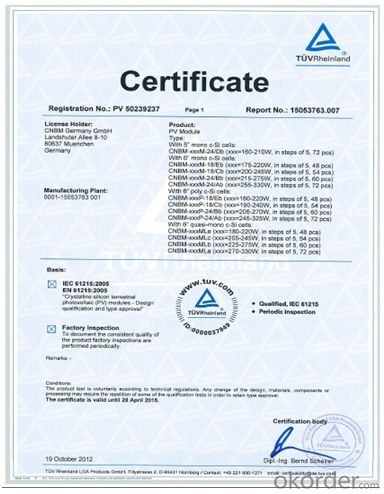
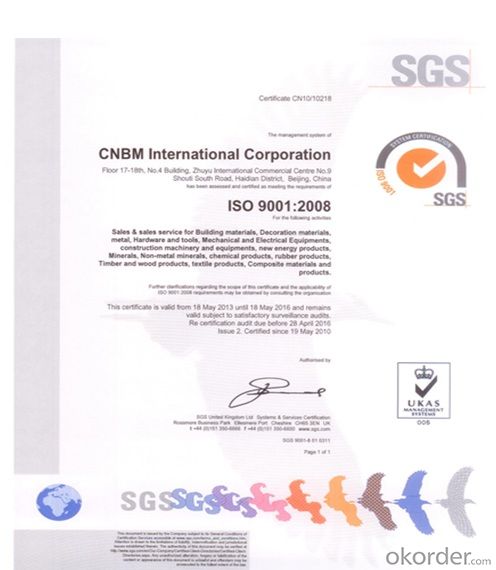
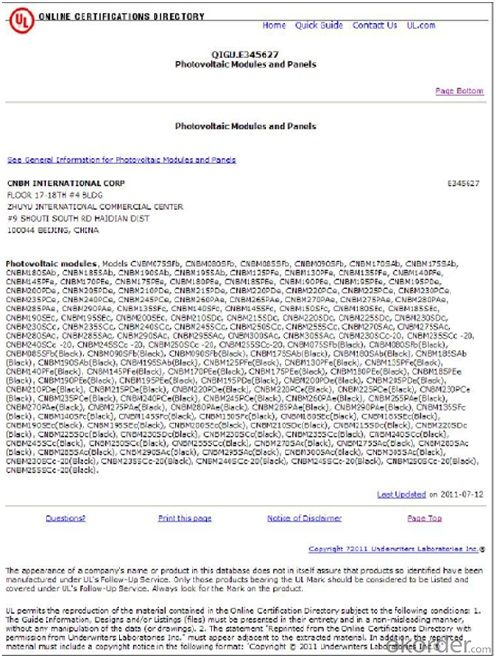

FAQ
We have organized several common questions for our clients,may help you sincerely:
①What price for each watt?
It depends on the quantity, delivery date and payment terms,
②What is your size for each module? Can you tell me the Parameter of your module?
We have different series of panels in different output, both c-Si and a-Si. Please take the specification sheet for your reference.
③Can you provide the peripheral products of the solar panels, such as the battery, controller, and inverter? If so, can you tell me how do they match each other?
Yes, we can, we have two companies for solar region, one is CNBM International, the other is CNBM engineering Co.
We can provide you not only the solar module but also the off grid solar system, we can also provide you service with on grid plant.
④What is your warranty system?
Our product performance guarantees for 25 years
• 12 years guarantee for workmanship
• Timeliness of delivery
• Quality Products certified (TÜV, UL, CE, ISO)
⑤How do you pack your products?
We have rich experience on how to pack the panels to make sure the safety on shipment when it arrives at the destination.
⑥ Can you do OEM for us?
Yes, we can.
- Q: Can solar cells be used for powering concert venues?
- Yes, solar cells can be used for powering concert venues. Solar panels can be installed on the rooftops or surrounding areas of the venue to harness sunlight and convert it into electricity. This renewable energy source can help reduce reliance on traditional power grids and decrease carbon emissions associated with concert operations. While the size and capacity of the solar system would depend on the energy needs of the venue, it is a viable option for powering concert venues in a sustainable and environmentally friendly manner.
- Q: Can solar cells be used in recreational vehicles?
- Yes, solar cells can be used in recreational vehicles. They are a popular and effective solution for powering various systems in RVs including lighting, appliances, and electronics. Solar panels can be mounted on the roof of an RV to harness sunlight and convert it into electricity, providing a reliable and sustainable source of power while on the road or during camping trips. Additionally, solar cells offer the advantage of being environmentally friendly and reducing reliance on traditional energy sources.
- Q: What is the maximum temperature a solar cell can withstand?
- The maximum temperature a solar cell can withstand varies depending on the specific type and design of the cell. However, most solar cells can typically withstand temperatures up to around 85-90 degrees Celsius (185-194 degrees Fahrenheit) without significant degradation in performance.
- Q: Can solar cells be used in traffic management systems?
- Yes, solar cells can be used in traffic management systems. They can be utilized to power various components of the system such as traffic lights, sensors, and cameras. Solar cells provide a renewable and sustainable source of energy, reducing the reliance on traditional power sources and helping to reduce carbon emissions. Additionally, solar-powered traffic management systems can be installed in remote areas where access to electricity grids may be limited or non-existent.
- Q: Can solar cells be used in public infrastructure projects?
- Yes, solar cells can be used in public infrastructure projects. Solar cells, also known as solar panels, are an efficient and sustainable source of renewable energy. They can be integrated into various public infrastructure projects such as streetlights, bus stations, parking lots, and rooftops of public buildings, among others. By harnessing the power of the sun, solar cells can help reduce dependency on traditional energy sources, lower carbon emissions, and contribute to a more environmentally friendly and resilient public infrastructure.
- Q: Can solar cells be used to power water treatment plants?
- Yes, solar cells can be used to power water treatment plants. Solar energy can be harnessed to generate electricity, which can then be used to power the various processes involved in water treatment, such as pumping, filtration, and disinfection. Solar-powered water treatment plants are an environmentally friendly and sustainable solution, especially in remote areas where access to grid electricity may be limited.
- Q: What is the role of batteries in solar cell systems?
- The role of batteries in solar cell systems is to store excess energy produced by the solar panels during the day for use during periods of low sunlight or at night. Batteries act as a backup power source, allowing for a continuous supply of electricity even when the sun is not shining.
- Q: Can solar cells be used for powering military bases?
- Yes, solar cells can definitely be used for powering military bases. Solar energy is a reliable and sustainable source of power that can provide electricity to meet the energy demands of military facilities. By utilizing solar cells, military bases can reduce their dependency on fossil fuels, enhance energy efficiency, and contribute to a cleaner and greener environment. Additionally, solar power systems can be installed in remote or off-grid locations, making it an ideal solution for powering military bases in various terrains and regions.
- Q: Can solar cells be used to power data centers?
- Yes, solar cells can be used to power data centers. Solar panels can generate electricity from sunlight, which can be used to power the energy needs of data centers. However, the feasibility and effectiveness of using solar power for data centers depend on various factors such as the size of the data center, the availability of sunlight, energy storage solutions, and the overall energy consumption of the facility.
- Q: What is the impact of bird droppings or debris on solar cell performance?
- Bird droppings or debris can significantly impact the performance of solar cells. When bird droppings or debris accumulate on the surface of the solar panels, they can block sunlight from reaching the cells, reducing their efficiency. This shading effect can result in a decrease in electricity generation and overall output. Additionally, bird droppings contain corrosive substances that may damage the protective coatings on the solar panels, leading to long-term performance degradation. Therefore, regular cleaning and maintenance are essential to ensure optimal solar cell performance.
Send your message to us
Solar Cells Bulk - Polycrystalline Solar Panels for 245w -156*156 Poly Cell
- Loading Port:
- Shanghai
- Payment Terms:
- TT OR LC
- Min Order Qty:
- 25 pc
- Supply Capability:
- 100000 pc/month
OKorder Service Pledge
OKorder Financial Service
Similar products
Hot products
Hot Searches
Related keywords
